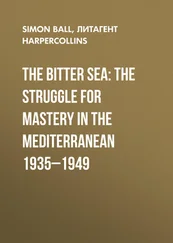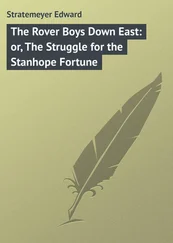Чарльз Дарвин - The Origin of Species by Means of Natural Selection Or, the Preservation of Favoured Races in the Struggle for Life
Здесь есть возможность читать онлайн «Чарльз Дарвин - The Origin of Species by Means of Natural Selection Or, the Preservation of Favoured Races in the Struggle for Life» весь текст электронной книги совершенно бесплатно (целиком полную версию без сокращений). В некоторых случаях можно слушать аудио, скачать через торрент в формате fb2 и присутствует краткое содержание. Год выпуска: 1999, Жанр: Биология, на английском языке. Описание произведения, (предисловие) а так же отзывы посетителей доступны на портале библиотеки ЛибКат.
- Название:The Origin of Species by Means of Natural Selection Or, the Preservation of Favoured Races in the Struggle for Life
- Автор:
- Жанр:
- Год:1999
- ISBN:нет данных
- Рейтинг книги:3 / 5. Голосов: 1
-
Избранное:Добавить в избранное
- Отзывы:
-
Ваша оценка:
- 60
- 1
- 2
- 3
- 4
- 5
The Origin of Species by Means of Natural Selection Or, the Preservation of Favoured Races in the Struggle for Life: краткое содержание, описание и аннотация
Предлагаем к чтению аннотацию, описание, краткое содержание или предисловие (зависит от того, что написал сам автор книги «The Origin of Species by Means of Natural Selection Or, the Preservation of Favoured Races in the Struggle for Life»). Если вы не нашли необходимую информацию о книге — напишите в комментариях, мы постараемся отыскать её.
The Origin of Species by Means of Natural Selection Or, the Preservation of Favoured Races in the Struggle for Life — читать онлайн бесплатно полную книгу (весь текст) целиком
Ниже представлен текст книги, разбитый по страницам. Система сохранения места последней прочитанной страницы, позволяет с удобством читать онлайн бесплатно книгу «The Origin of Species by Means of Natural Selection Or, the Preservation of Favoured Races in the Struggle for Life», без необходимости каждый раз заново искать на чём Вы остановились. Поставьте закладку, и сможете в любой момент перейти на страницу, на которой закончили чтение.
Интервал:
Закладка:
The construction of the flower in another closely allied orchid, namely, the Catasetum, is widely different, though serving the same end; and is equally curious. Bees visit these flowers, like those of the Coryanthes, in order to gnaw the labellum; in doing this they inevitably touch a long, tapering, sensitive projection, or, as I have called it, the antenna. This antenna, when touched, transmits a sensation or vibration to a certain membrane which is instantly ruptured; this sets free a spring by which the pollen-mass is shot forth, like an arrow, in the right direction, and adheres by its viscid extremity to the back of the bee. The pollen-mass of the male plant (for the sexes are separate in this orchid) is thus carried to the flower of the female plant, where it is brought into contact with the stigma, which is viscid enough to break certain elastic threads, and retain the pollen, thus effecting fertilisation.
How, it may be asked, in the foregoing and in innumerable other instances, can we understand the graduated scale of complexity and the multifarious means for gaining the same end. The answer no doubt is, as already remarked, that when two forms vary, which already differ from each other in some slight degree, the variability will not be of the same exact nature, and consequently the results obtained through natural selection for the same general purpose will not be the same. We should also bear in mind that every highly developed organism has passed through many changes; and that each modified structure tends to be inherited, so that each modification will not readily be quite lost, but may be again and again further altered. Hence, the structure of each part of each species, for whatever purpose it may serve, is the sum of many inherited changes, through which the species has passed during its successive adaptations to changed habits and conditions of life.
Finally, then, although in many cases it is most difficult even to conjecture by what transitions organs could have arrived at their present state; yet, considering how small the proportion of living and known forms is to the extinct and unknown, I have been astonished how rarely an organ can be named, towards which no transitional grade is known to lead. It is certainly true, that new organs appearing as if created for some special purpose rarely or never appear in any being; as indeed is shown by that old, but somewhat exaggerated, canon in natural history of "Natura non facit saltum." We meet with this admission in the writings of almost every experienced naturalist; or, as Milne Edwards has well expressed it, "Nature is prodigal in variety, but niggard in innovation." Why, on the theory of Creation, should there be so much variety and so little real novelty? Why should all the parts and organs of many independent beings, each supposed to have been separately created for its own proper place in nature, be so commonly linked together by graduated steps? Why should not Nature take a sudden leap from structure to structure? On the theory of natural selection, we can clearly understand why she should not; for natural selection acts only by taking advantage of slight successive variations; she can never take a great and sudden leap, but must advance by the short and sure, though slow steps.
ORGANS OF LITTLE APPARENT IMPORTANCE, AS AFFECTED BY NATURAL SELECTION.
As natural selection acts by life and death, by the survival of the fittest, and by the destruction of the less well-fitted individuals, I have sometimes felt great difficulty in understanding the origin or formation of parts of little importance; almost as great, though of a very different kind, as in the case of the most perfect and complex organs.
In the first place, we are much too ignorant in regard to the whole economy of any one organic being to say what slight modifications would be of importance or not. In a former chapter I have given instances of very trifling characters, such as the down on fruit and the colour of its flesh, the colour of the skin and hair of quadrupeds, which, from being correlated with constitutional differences, or from determining the attacks of insects, might assuredly be acted on by natural selection. The tail of the giraffe looks like an artificially constructed fly-flapper; and it seems at first incredible that this could have been adapted for its present purpose by successive slight modifications, each better and better fitted, for so trifling an object as to drive away flies; yet we should pause before being too positive even in this case, for we know that the distribution and existence of cattle and other animals in South America absolutely depend on their power of resisting the attacks of insects: so that individuals which could by any means defend themselves from these small enemies, would be able to range into new pastures and thus gain a great advantage. It is not that the larger quadrupeds are actually destroyed (except in some rare cases) by flies, but they are incessantly harassed and their strength reduced, so that they are more subject to disease, or not so well enabled in a coming dearth to search for food, or to escape from beasts of prey.
Organs now of trifling importance have probably in some cases been of high importance to an early progenitor, and, after having been slowly perfected at a former period, have been transmitted to existing species in nearly the same state, although now of very slight use; but any actually injurious deviations in their structure would of course have been checked by natural selection. Seeing how important an organ of locomotion the tail is in most aquatic animals, its general presence and use for many purposes in so many land animals, which in their lungs or modified swim-bladders betray their aquatic origin, may perhaps be thus accounted for. A well-developed tail having been formed in an aquatic animal, it might subsequently come to be worked in for all sorts of purposes, as a fly-flapper, an organ of prehension, or as an aid in turning, as in the case of the dog, though the aid in this latter respect must be slight, for the hare, with hardly any tail, can double still more quickly.
In the second place, we may easily err in attributing importance to characters, and in believing that they have been developed through natural selection. We must by no means overlook the effects of the definite action of changed conditions of life, of so-called spontaneous variations, which seem to depend in a quite subordinate degree on the nature of the conditions, of the tendency to reversion to long-lost characters, of the complex laws of growth, such as of correlation, comprehension, of the pressure of one part on another, etc., and finally of sexual selection, by which characters of use to one sex are often gained and then transmitted more or less perfectly to the other sex, though of no use to the sex. But structures thus indirectly gained, although at first of no advantage to a species, may subsequently have been taken advantage of by its modified descendants, under new conditions of life and newly acquired habits.
If green woodpeckers alone had existed, and we did not know that there were many black and pied kinds, I dare say that we should have thought that the green colour was a beautiful adaptation to conceal this tree-frequenting bird from its enemies; and consequently that it was a character of importance, and had been acquired through natural selection; as it is, the colour is probably in chief part due to sexual selection. A trailing palm in the Malay Archipelago climbs the loftiest trees by the aid of exquisitely constructed hooks clustered around the ends of the branches, and this contrivance, no doubt, is of the highest service to the plant; but as we see nearly similar hooks on many trees which are not climbers, and which, as there is reason to believe from the distribution of the thorn-bearing species in Africa and South America, serve as a defence against browsing quadrupeds, so the spikes on the palm may at first have been developed for this object, and subsequently have been improved and taken advantage of by the plant, as it underwent further modification and became a climber. The naked skin on the head of a vulture is generally considered as a direct adaptation for wallowing in putridity; and so it may be, or it may possibly be due to the direct action of putrid matter; but we should be very cautious in drawing any such inference, when we see that the skin on the head of the clean-feeding male turkey is likewise naked. The sutures in the skulls of young mammals have been advanced as a beautiful adaptation for aiding parturition, and no doubt they facilitate, or may be indispensable for this act; but as sutures occur in the skulls of young birds and reptiles, which have only to escape from a broken egg, we may infer that this structure has arisen from the laws of growth, and has been taken advantage of in the parturition of the higher animals.
Читать дальшеИнтервал:
Закладка:
Похожие книги на «The Origin of Species by Means of Natural Selection Or, the Preservation of Favoured Races in the Struggle for Life»
Представляем Вашему вниманию похожие книги на «The Origin of Species by Means of Natural Selection Or, the Preservation of Favoured Races in the Struggle for Life» списком для выбора. Мы отобрали схожую по названию и смыслу литературу в надежде предоставить читателям больше вариантов отыскать новые, интересные, ещё непрочитанные произведения.
Обсуждение, отзывы о книге «The Origin of Species by Means of Natural Selection Or, the Preservation of Favoured Races in the Struggle for Life» и просто собственные мнения читателей. Оставьте ваши комментарии, напишите, что Вы думаете о произведении, его смысле или главных героях. Укажите что конкретно понравилось, а что нет, и почему Вы так считаете.












